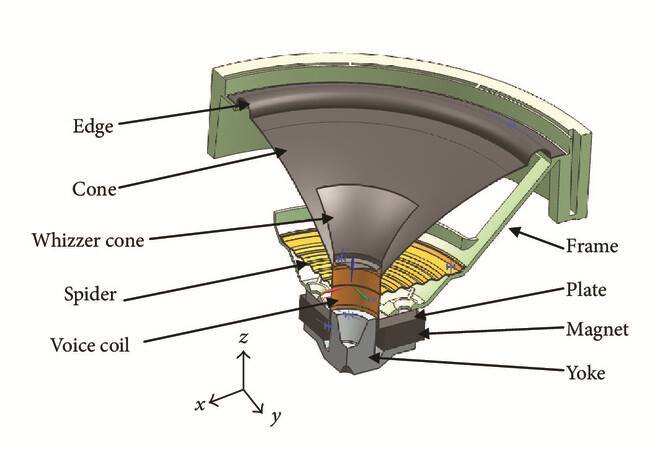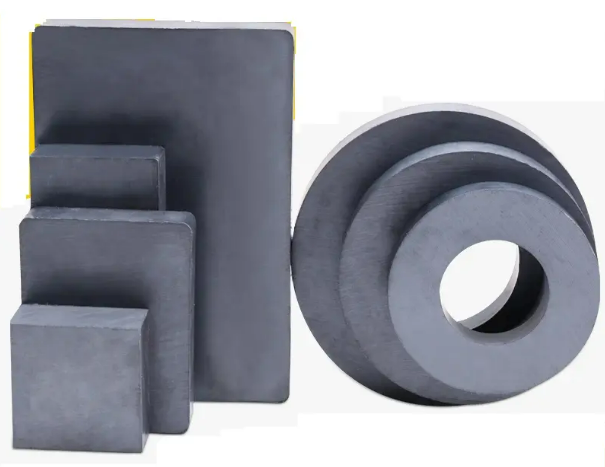Ferrite Magnets: Exploring Their Pros and Cons Across Industries
Introduction
Ferrite magnets, also known as ceramic magnets, are a class of permanent magnets widely used in various industries due to their unique characteristics. These magnets are composed of iron oxide (Fe2O3) and strontium carbonate (SrCO3) or barium carbonate (BaCO3). While ferrite magnets offer several advantages, they also come with some limitations. In this article, we'll explore the pros and cons of ferrite magnets across different industries, shedding light on their versatile applications and the challenges they pose.
 [1]
[1]
Figure 1. Ferrite Magnets
Advantages of Ferrite Magnets:
Ferrite magnets offer a range of benefits that contribute to their widespread use in various applications. Here, let’s start by exploring these benefits and their significance in different industries.
- Cost-Effective: Ferrite magnets are among the most cost-effective permanent magnets available. This affordability makes them attractive for applications where budget constraints are a concern.
- High Resistance to Demagnetization: Ferrite magnets exhibit strong resistance to demagnetization, making them suitable for applications that involve varying magnetic fields or shock.
- Corrosion Resistance: These magnets are highly corrosion-resistant, which is crucial for applications exposed to moisture or other environmental factors.
- High Curie Temperature: Ferrite magnets can withstand high temperatures, making them suitable for applications where elevated operating temperatures are encountered.
- Versatile Shape and Size: Ferrite magnets can be easily manufactured in various shapes and sizes to meet specific application requirements.
- Magnetization Options: They can be magnetized in different directions to suit specific applications, such as axial, diametric, or multipole magnetization.
Related reading: What Are Ferrite Magnets?
Limitations of Ferrite Magnets:
While ferrite magnets come with numerous advantages, they also have limitations that affect their suitability for certain applications. Here are some notable examples.
- Lower Magnetic Strength: Ferrite magnets have lower magnetic strength compared to neodymium or samarium cobalt magnets, limiting their use in high-performance applications.
- Brittle Nature: They are brittle and can chip or break if subjected to mechanical stress, making them less suitable for applications with high mechanical loads.
- Lower Energy Product: Ferrite magnets have a lower energy product, which means they store less magnetic energy and may not be ideal for applications that require strong magnetic fields.
- Limited Temperature Stability: While they have a high Curie temperature, ferrite magnets may lose some of their magnetization at elevated temperatures, affecting their performance in high-temperature applications.
Applications across Industries:
With these advantages and limitations, ferrite magnets find diverse applications in various industries, each relying on these properties for specific needs. Let's delve into some key sectors where ferrite magnets play a crucial role.
- Automotive Industry: Ferrite magnets find applications in electric power steering systems, automotive sensors, and under-the-hood components due to their cost-effectiveness and corrosion resistance.
- Consumer Electronics: They are used in various electronic devices, including speakers, magnetic latches, and sensors.
- Electric Motors: Ferrite magnets are employed in electric motor components, such as rotor assemblies in household appliances and power tools.
- Magnetic Separators: Their corrosion resistance and low cost make ferrite magnets suitable for use for magnetic separators to remove ferrous contaminants from liquids and powders.
- Refrigeration and HVAC: They are used in fan motors, pump motors, and compressors in refrigeration and HVAC systems.
- Education and Hobbies: Ferrite magnets are popular in educational kits, craft projects, and refrigerator magnets.
Conclusion
In a word, ferrite magnets offer several advantages, including cost-effectiveness, corrosion resistance, and versatility in shape and size. However, their limitations in terms of magnetic strength and brittleness make them better suited for specific applications rather than high-performance uses. Their use spans various industries, from automotive and consumer electronics to magnetic separation and refrigeration, where their unique properties fulfill specific requirements. Stanford Magnets is a global leader in magnet supply, boasting decades of experience in research, development, manufacturing, and sales. Our extensive range includes neodymium magnets, SmCo magnets, AlNiCo magnets, and ferrite magnets. Our commitment to quality and affordability has made us a trusted source for a wide array of industries and applications worldwide. Please check our homepage for more details. Reference: [1] Ferrite (magnet). (2023, October 14). In Wikipedia. https://en.wikipedia.org/wiki/Ferrite_%28magnet%29















